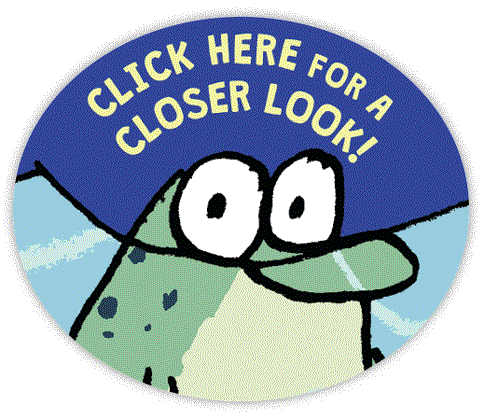PURCHASE THIS BOOK
Bookshop
IndieBound
Amazon
Barnes & Noble
HarperCollins
2022 Notable
Poetry Book —NCTE Award for Excellence
2021 Chicago Public Library’s Best Informational Books for K-3
THE LAST STRAW
Kids vs. Plastics
Illustrated by Christiane Engel
HarperCollins
ISBN: 978-0062981394
“I encourage everyone to read this book.” —Dr. Jane Goodall
There’s no doubt about it—plastic is in almost everything. From our phones and computers to our toys and utensils, plastic is everywhere. But the amount of plastic we throw away is hurting the health of our planet.
With The Last Straw: Kids vs. Plastics, readers will be fascinated as they learn about the growing plastic problem and meet just a few of the young activists who are standing up and speaking out for change.
You’ll hear about the “Be Straw Free” campaign, started by nine-year-old Milo Cress.
You’ll discover how scientists are using jellyfish snot and munching, crunching caterpillars to break down plastic pollution faster.
You’ll meet Xóchitl Guadalupe Cruz López, the eight-year-old girl turning old plastic bottles into solar heaters.
And there are many more incredible kids here, not much older than our readers, who will inspire us all to change the way we think about plastic!
With an introduction from Milo Cress and bright, colorful illustrations from Christiane Engel, this collection of brilliant, lyrical nonfiction poems by award-winning author Susan Hood highlights the threat of plastic and the kids who are fighting for change to save our planet. Includes extensive backmatter with a timeline, author’s note, further resources, and more.
Praise for THE LAST STRAW:
★ Kirkus (Starred Review)
“Thoughtful and thought-provoking, this book will plant the seeds of environmental activism in young readers.”
A blend of STEM and poetry, this multidisciplinary book artfully explains the benefits and problems of plastics and encourages activism and alternatives.
A variety of short topical verses for younger listeners is supplemented by short prose paragraphs with additional details for older readers. Illustrations that alternate between striking full-color double-page spreads and smaller colorful vignettes surrounded by white space are guaranteed to grab attention. In the two spreads that open the volume, a community map explains where plastics are commonly found, and an abecedary shows where plastics hide. The plastic content in items like eyeglasses and helmets might be obvious, but the notion that plastic is in chewing gum and cash will probably surprise readers. Interesting, fairly in-depth information about the life cycle of a discarded plastic fork, the Great Pacific Garbage Patch, a trash-collecting contraption in Baltimore’s river, uses for recycled plastics, potential solutions for plastic pollution that involve jellyfish or caterpillars, and alternatives to single-use plastic items follows. In addition to pages that specifically encourage activism, many pages feature quotes from young activists from around the world, and illustrations reflect a similar diversity. A hidden gem in the ample backmatter, Poetry Notes identify and explain the numerous poetic forms that make up the text.
Thoughtful and thought-provoking, this book will plant the seeds of environmental activism in young readers. (author’s note, timeline, additional resources) (Informational picture book/poetry. 5-10)
https://www.kirkusreviews.com/book-reviews/susan-hood/the-last-straw-hood/
A young eco-activist shaking things up. (Photo used with permission.)
Publishers Weekly
“A stellar new nonfiction picture book. It has such an array of styles and approaches, elegant and entertaining, informative and sublime.”
—Kenny Brechner, PW blog
Booklist
“Whether an ode to jellyfish or a collective poem about the fork that Jack threw away, this is a breezy way of introducing ecology concepts and starting important conversations.” — Kathleen McBroom
School Library Journal
“Each two-page spread contains a poem and informational text on topics such as the consumption of plastic, how it is affecting the environment, steps to reduce the use of plastic, or the latest scientific discoveries to combat plastic waste. Most notable is the focus on children and teens who are making a difference by cutting back on the use of plastic or finding ways to recycle plastic to aid their communities. A fantastic resource for those who want to learn about the fight against plastic pollution. VERDICT: A useful book to include in poetry or social awareness units, this is a thorough resource on plastic consumption.” —V. Lynn Christiansen
Fuse 8 31 days, 31 Lists: Poetry Books
Seventeen smart poems introduce readers to the activists and science working hard to combat our problems with plastic. From jellyfish snot to a call to arms, you don’t want to miss this smart read. Absolutely. And while the science is great, I’d like to point out that the poetry itself is actually incredibly strong. It scans beautifully. At my library we’ve started a new book committee that will focus primarily on science-related children’s books. Guess which book I’m proposing to them first…
—Betsy Bird
Click book jacket to enlarge.


